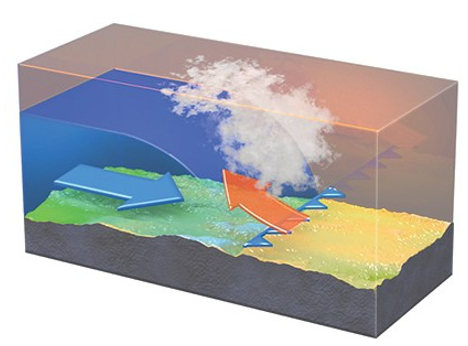How can we get information about the stress field near the surface? Some kilometers down? Even deeper down?
What will be an ideal response?
Answer: Near the surface: Overcoring measurements, but also the orientation of recent fractures or fault scarps from earthquakes, fold axes and fissures associated with volcanism can indicate the orientation of the least horizontal principal stress. Some kilometers down (in wells): Borehole breakouts estimated from dipmeter or well imaging tools, hydraulic fracturing, overcoring (less common and more difficult). Deeper down focal mechanisms give stress information.
You might also like to view...
In the cross section of the front pictured here

A) cumuliform clouds tend to form with precipitation being relatively short-lived.
B) cumuliform clouds tend to form with precipitation being of relatively long duration.
C) stratiform clouds tend to form with precipitation being relatively short-lived.
D) stratiform clouds tend to form with precipitation being of relatively long duration.
Which of the following is true of enhancers?
A) They are always located next to the TATA box. B) They are always part of the promoter. C) They are always located far from the promoter. D) They may be located far from the promoter.
________ refers to the bright head of a comet
A) Lima B) Coma C) Toma D) Lira
What is the main process by which soils form?
A. erosion B. deposition of silt on a floodplain C. deposition of silt by the wind D. weathering